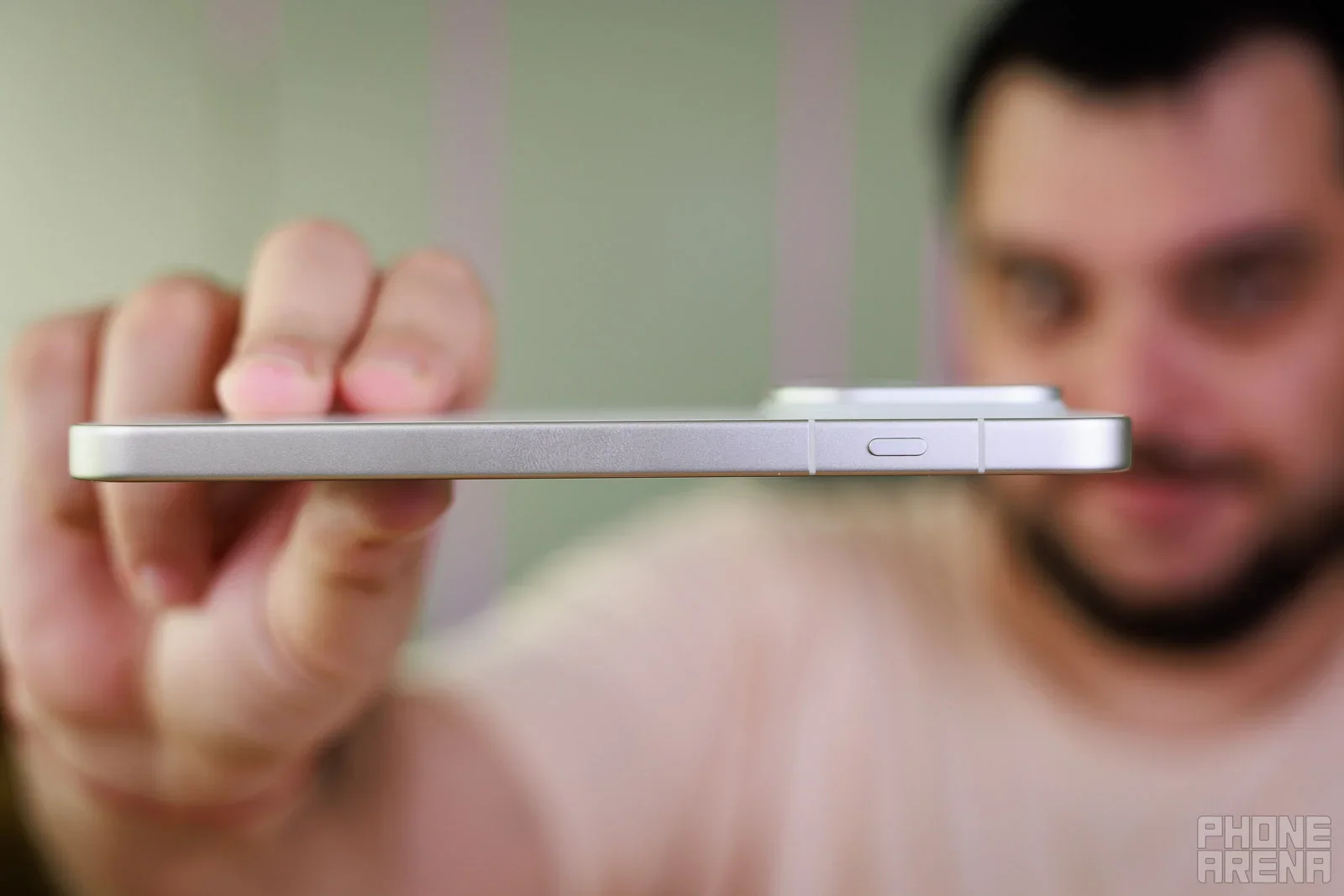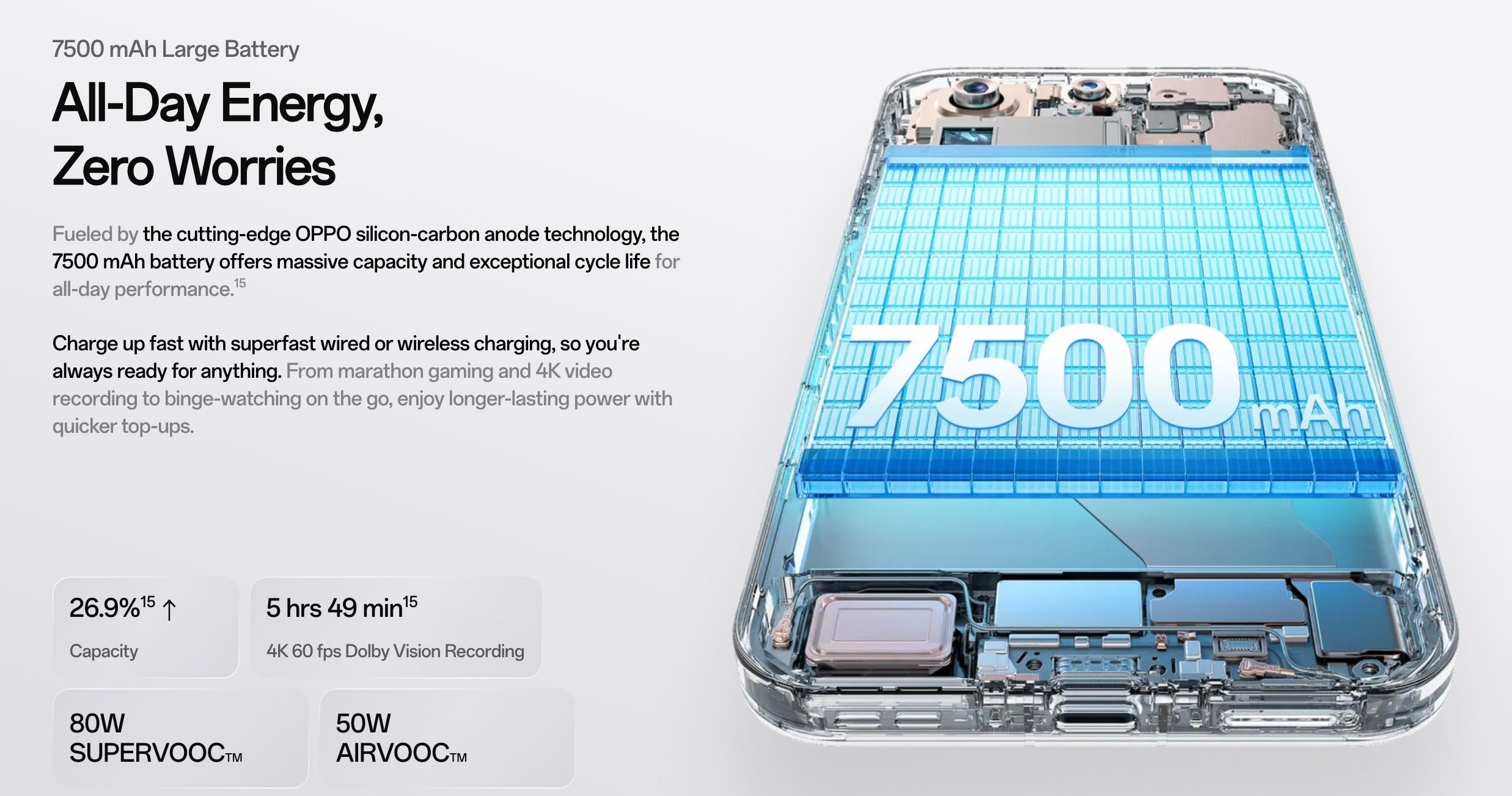I have used a couple of new “big battery phones” from leading Chinese companies like Oppo and Xiaomi. These look and feel pretty much like regular flagships, maybe a hair thicker, but they come with massive batteries. The Oppo Find X9 Pro and Xiaomi 17 Pro Max both feature a 7,500 mAh battery.
| Phone | Thickness, weight |
|---|---|
| Oppo Find X9 Pro | 8.3mm thick, 224 grams |
| iPhone 17 Pro Max | 8.75mm thick, 233 grams |
| Galaxy S25 Ultra | 8.2mm thick, 218 grams |
| Pixel 10 Pro XL | 8.5mm, 232 grams |
And while Apple and Samsung can spin their platform efficiencies as a sort of excuse, the change in actual user experience with these phones is actually so big, you cannot unsee it.
Battery Test Results: the raw numbers
Of course, we couldn’t just trust one number, we had to verify and see if those bigger batteries indeed deliver a real-world upgrade.
Well, they sure do.
On our web browsing test, the Oppo Find X9 Pro scored around 25 hours, a good 25% over the scores of the iPhones, Galaxies and Pixels of this world.
For YouTube video streaming, the Oppo got a score nearly 45% higher.
What these numbers tell us is that you don’t always get a 50% longer battery life with a 50% bigger battery, but you are getting a very noticeable improvement nonetheless.
Paradigm shift


Despite having a massive battery, the Oppo Find X9 Pro does not feel too bulky (Image by PhoneArena)
All of those complicated numbers, result in one simple thing: these new “big battery phones” last two days.
It’s as simple as that.
You don’t need to remember to charge theme overnight. And when you go on a weekend trip, you can forget the charger and still have a phone that won’t die on you.
With sparse use, you can extend that battery life to three days, but that would be a stretch for most people.
While mainstream flagships have good battery life, there is just a mind-shift that happens when your phone actually lasts you two full days on a charge.
A new differentiator
What makes this change even more important now than ever is that progress in other key areas that push users to upgrade has slowed down.
When all phones have so similar camera quality, buyers pay attention to those areas where the pace of innovation is faster and where it makes a real-world difference. And in 2025/2026, that’s battery life.
Apple and Samsung are vulnerable
Their restraint starts to look a lot like stagnation


Silicon carbon batteries have now withstood the test of time (Image by Oppo)
We all know that Apple and Samsung could have been the first ones to introduce these new technologies.
After all, those companies still have the biggest market share and financial resources to pull this off. But they are in no rush — and that is the problem.
Previously, the big two had the excuse of big batteries, resulting in unbearably thick and bulky phones. But this time it’s different. Advances in stacked battery cells, silicon-carbon anodes, and AI-based power management have made it possible to fit far more energy into the same volume safely.
The result is that Apple and Samsung’s restraint now looks less like care about user safety and more like stagnation. When your competitors offer 50% more battery, faster charging, and comparable design quality, “premium” starts to sound hollow.
Right now, both companies have the safety net of regulation. Many of the Chinese brands driving that innovation are either banned or limited in the United States due to trade restrictions, data security concerns and political factors. Even in many European countries, their presence is limited by import barriers and distribution challenges. Apple and Samsung simply don’t have to compete head-to-head with the boldest, most aggressive innovators in the Android world.
But regulatory insulation is not the same as competitive strength. Markets evolve and technology finds ways to spread. Superior products have a way of crossing borders, whether through gray-market imports, tech media or through viral comparisons. When a user in the US watches a YouTube review showing a OnePlus or Xiaomi phone that lasts two days on a single charge and recharges in half an hour, it plants a seed of dissatisfaction. Uncomfortable questions start appearing: Why can’t my $1,200 iPhone or Galaxy do that?
Those Chinese phones will likely officially unavailable, but the pressure of comparison will only build. We’ve seen this a few years ago. When Huawei was at its peak, it pushed Samsung and Apple to improve night mode in their phones, and to add more zoom lenses. Now the same dynamic is emerging around batteries.
With such a wide gap in endurance and charging speeds, Western consumers will start perceiving Apple and Samsung as lagging behind, even if they cannot buy the alternatives directly.


